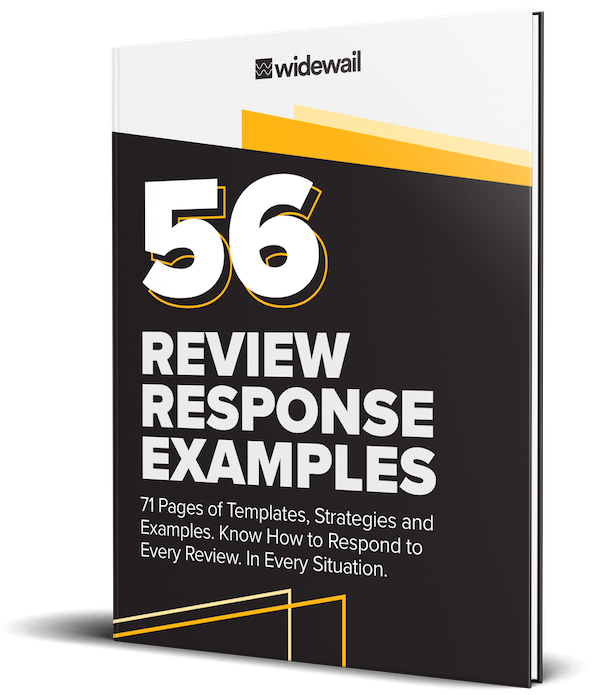How to Boost Local SEO Rank with Google Reviews
Do Google Reviews help your local SEO ranking? In short, yes.
In this guide we cover:
- What is local SEO?
- Local search ranking factors
- How Google Reviews impact local search rank
- Key review and response metrics
- Do negative reviews hurt SEO?
Let’s get started.
What is Local SEO?
Local SEO is the practice of optimizing a local business for location-specific keywords, such as “auto body shop Phoenix.” The two main components of local search engine optimization include optimizing the business’s website and Google Business Profile (formerly known as Google My Business).
What is the importance of local SEO?
Simple: it’s how local customers find local businesses.
These customers are looking for businesses with specific attributes, such as location or time-sensitive services like a meal or an oil change, and this is reflected in their search intent. Google's algorithm works to pair the customer with a business or choice of businesses that meets their unique needs.
Local SEO can be split into two basic categories: Map Pack/Local Pack and Local Organic Search.
The Map Pack (synonymous with “Local Pack”) consists of a short list of local business listings placed at or very near the top of a search results page.
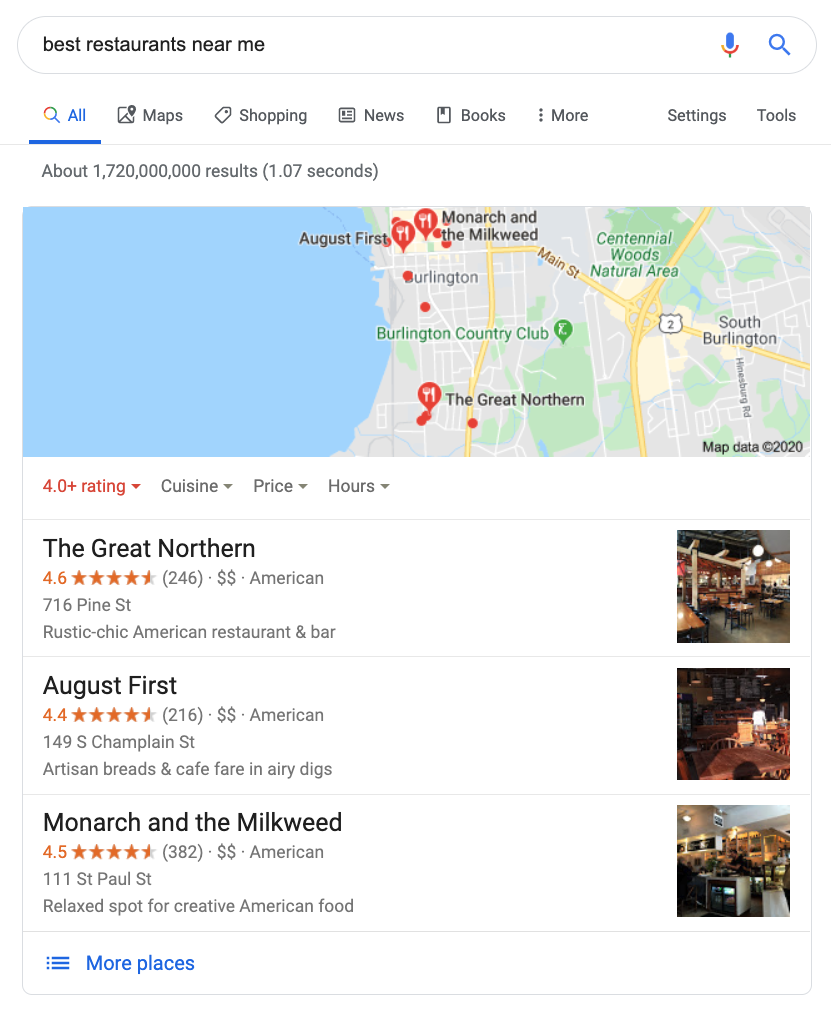
The Map Pack has its own algorithm and its own set of rules which we will cover in the next section. What you need to know right now is: the Map Pack is where you want your local business to show up.
Local organic search consists of the normal search listings below the Map Pack. Although the Map Pack should be your focus for local SEO, don’t ignore traditional organic SEO best practices. The good news is that most local SEO optimization tactics will boost both your map pack ranking and organic SEO ranking at the same time.
Local organic search for “best auto shops near me”:
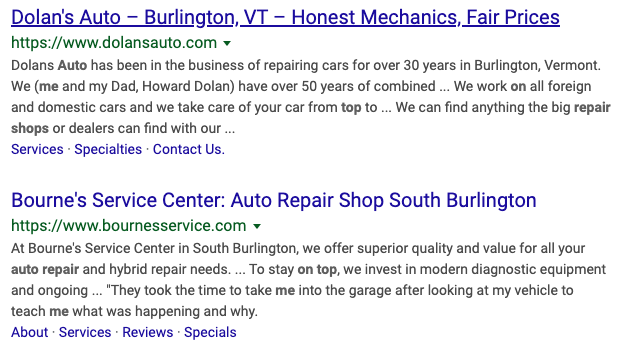
It’s important to keep in mind that the location of a potential customer will have a significant impact on the results they see. The distance required to reach a destination is a significant ranking factor for Google's local SEO ranking factors.
Local Falcon is a good tool to learn more about how your rank is displayed on a map of your city or town.
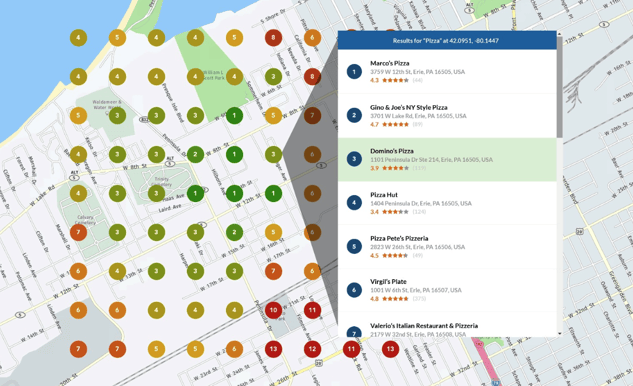
Looking to have someone manage your listings for you? Download this guide on how to choose a Local SEO Listings Management Vendor.
How Reviews Impact Local Search Rank
Here’s what Google has to say
Let’s go to the source. Google sorts local ranking factors into three broad categories: relevance, distance, and prominence.
Review data falls into the prominence category. Prominence is defined as: how well known a business is.
As noted by Google:
“Google review count and score are factored into local search ranking: more reviews and positive ratings will probably improve a business's local ranking.”
“Interact with customers by responding to reviews that they leave about your business. Responding to reviews shows that you value your customers and the feedback that they leave about your business. High-quality, positive reviews from your customers will improve your business’s visibility and increase the likelihood that a potential customer will visit your location. Encourage customers to leave feedback by creating a link they can click to write reviews.”
“There's no way to request or pay for a better local ranking on Google. We do our best to keep the details of the search algorithm confidential to make the ranking system as fair as possible for everyone.”
In normal Google fashion, they don’t provide a lot of detail on how exactly reviews help local SEO. But we can say with confidence that online reviews are a determinative ranking factor. Can that be quantified? Yes.
Reviews as a Ranking Factor
Moz, the SEO juggernaut, determined that review signals (review quantity, review diversity, and review velocity) account for 15% of local pack rank.
Review quantity: the total number of reviews currently posted to your GBP.
Review diversity: the number of reviews on multiple, high-authority review platforms.
Review velocity: the frequency with which you received new reviews in a confined time period.
Out of eight local ranking factors, review signals are ranked third. Notably, they are only 1% behind link signals and their impact is rapidly on the rise. This makes a Google review management strategy more critical to your business than ever before.
At a high level, search engines are attempting to do the same thing that searchers are doing - find the right product, service, or information in a timely manner.
Reviews help local SEO rankings and search engines achieve this in a couple of ways:
One, they provide a high volume of current information about the business. As an alternative to content marketing, online customer reviews are inexpensive and high-value user-generated content.
Two, reviews serve to separate the good from the bad - helping consumers find the best local business for their needs.
While much of the "local seo" ranking determination is done by automated search engine algorithms, Google also uses human teams as quality raters. Content written by customers gives your site legitimacy and a SEO foothold for human and algorithmic raters alike, both looking for expertise, authority, and authenticity. (Yotpo)
Review components that influence SEO
Simply put, if your business is getting a significant number of excellent reviews and positive sentiment data across multiple high-authority review platforms, it stands a good chance of getting found and clicked on in local search results.
The four core review factors that influence SEO are volume, rating, keywords, and up-to-date content.
Volume
Increasing the number of reviews posted to your GBP is a great place to start.
A boost in volume will give future customers (and Google) more content to evaluate. Additionally, customers tend to value recent content more than old content. People evolve over time, and customers assume businesses do too.
In 2019, negative reviews accounted for only 12% of the reviews processed in Widewail’s technology platform. Although negative reviews are a normal part of doing business, in high quantities they will negatively impact your star rating.
A great way to minimize the impact of a few negative reviews is to dilute their influence with a large collection of positive reviews.
Customers are usually looking at a minimum of 10 reviews before they feel they can trust a business. To us, this says customers are looking for trends across a group of reviews, not isolated positive or negative experiences.
How many reviews should your business be getting? After analyzing our data, we discovered that proficient businesses receive around 30 reviews a month. This can vary of course, depending on your monthly foot traffic.
If you’re looking to increase your review volume, start by asking your current customers. Next, make it as easy as possible for customers to leave a review. Also consider our recent review response case study to see how these efforts can pay off.
One way to do that is to email recent customers with a link that goes directly to your Google reviews. It’s super easy.
To start, go to this page and enter your business name.
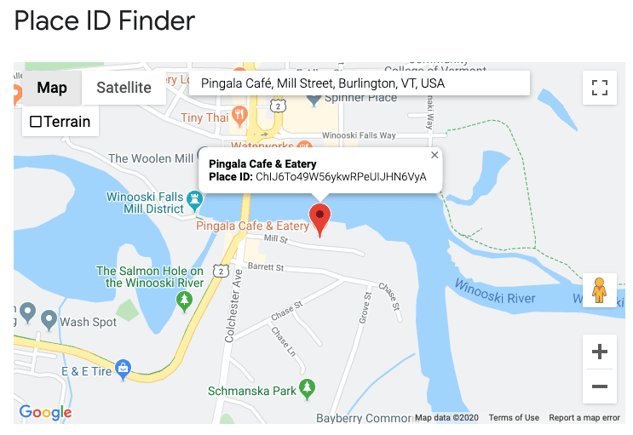
This will generate a “Place ID.”
Add that place ID to the end of this link:
https://search.google.com/local/writereview?placeid=
The final link will look like this:
https://search.google.com/local/writereview?placeid=ChIJ6To49W56ykwRPeUIJHN6VyA
When the user clicks the link, a window prompting them to write a review will pop up automatically.
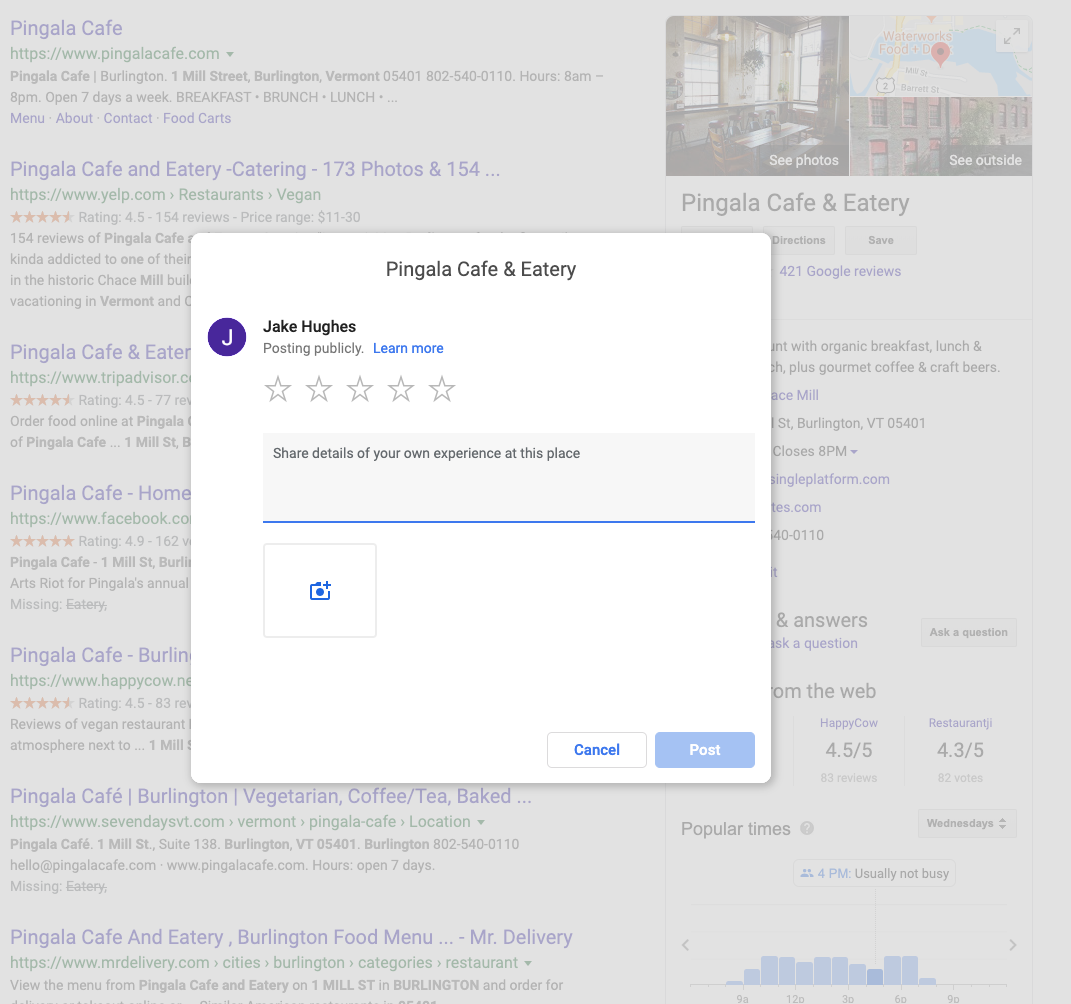
Interested in reaching more than a single customer at one time? Widewail's review generation software Invite makes it possible to text this direct link to every contact in your point of sales system. You can personalize the message your customers will receive to increase click-through-rates and get more reviews. Learn more about how Invite can improve your site's SEO here.
Rating
Your rating is important for a few reasons. To start, that number is the first thing potential customers see. Generally, the higher the better - we recommend a goal around 4.5.
Contrary to what you might assume, the Spiegel Research Center found that a rating between 4.2-4.5 is more likely to lead to a sale because it displays “good customer service” but avoids the assumption of “too good to be true.”
While 4.5 is the ideal rating, what’s most important is to stay at four stars or higher. When users search “best restaurants near me” Google automatically filters out any businesses with a rating less than 4.0.
.png?width=633&name=Screen+Shot+2020-01-16+at+9.11.32+AM%20(2).png)
Keywords
Relevant keywords include business name, location, products, and services. Users will naturally include some keywords in their reviews, but responding to reviews puts you in control and gives you the opportunity to include more specific keywords.
Here’s a great example of what we are talking about.
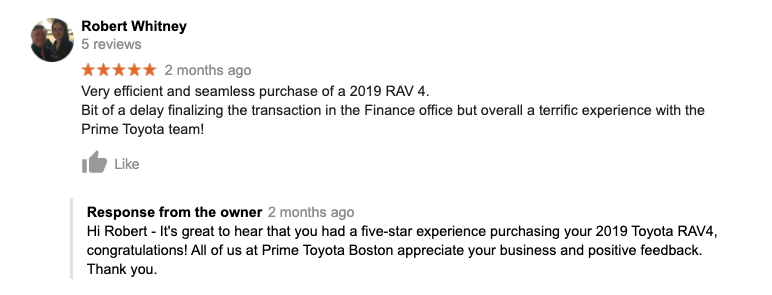
This review includes the product purchased and the store name, but the keywords are only partially included.
By responding, your business is able to get “2019 Toyota RAV4” posted instead of “2019 RAV 4” and “Prime Toyota Boston” instead of “Prime Toyota”.
Up-to-date content
Google uses consistently updated content to determine if a business is in a healthy and active state. Content marketing, such as blogs and social media posts, can accomplish this goal but is generally time-consuming and expensive to produce.
Comparatively, generating review content is as simple as finding good ways to ask your customers.
Further still - responding to online business reviews will pile on even more fresh GBP content. From a customer service perspective, review solicitation and response are beneficial. Rather than simply talking at prospective customers, your customers are talking about you, to you, and you are engaging with them in a public forum where potential customers can see that you’re committed to providing a great customer experience.
Key Review and Response Metrics
Ok, so you are soliciting feedback from your customers and responding to your reviews with SEO rich text. How do you know if the strategy is working?
Here are the metrics we recommend you keep an eye on.
Review Score
Otherwise known as your star rating, this is one of the broadest metrics related to reviews. Most of the metrics and tactics described in the following paragraphs work together to influence your business’s score. This number will be the first indicator a customer will use to make a judgment of your services.
Be sure to keep track of your score as it evolves over time. Are the reviews from last month pushing your overall score up or down? What about each department within the business? Is the service department outperforming the sales department? These are important questions to ask, and it is a lot of manual work to build these reports directly from Google to find the answers.
This is where Widewail comes in. We break down your business’s ratings by time period and profit center. Our reporting software also isolates performance across multiple review sites. We compile the data into easy-to-read reports and deliver them once a month to your inbox. Reports can also be viewed anytime by logging into the Widewail platform.
Here’s a sample:
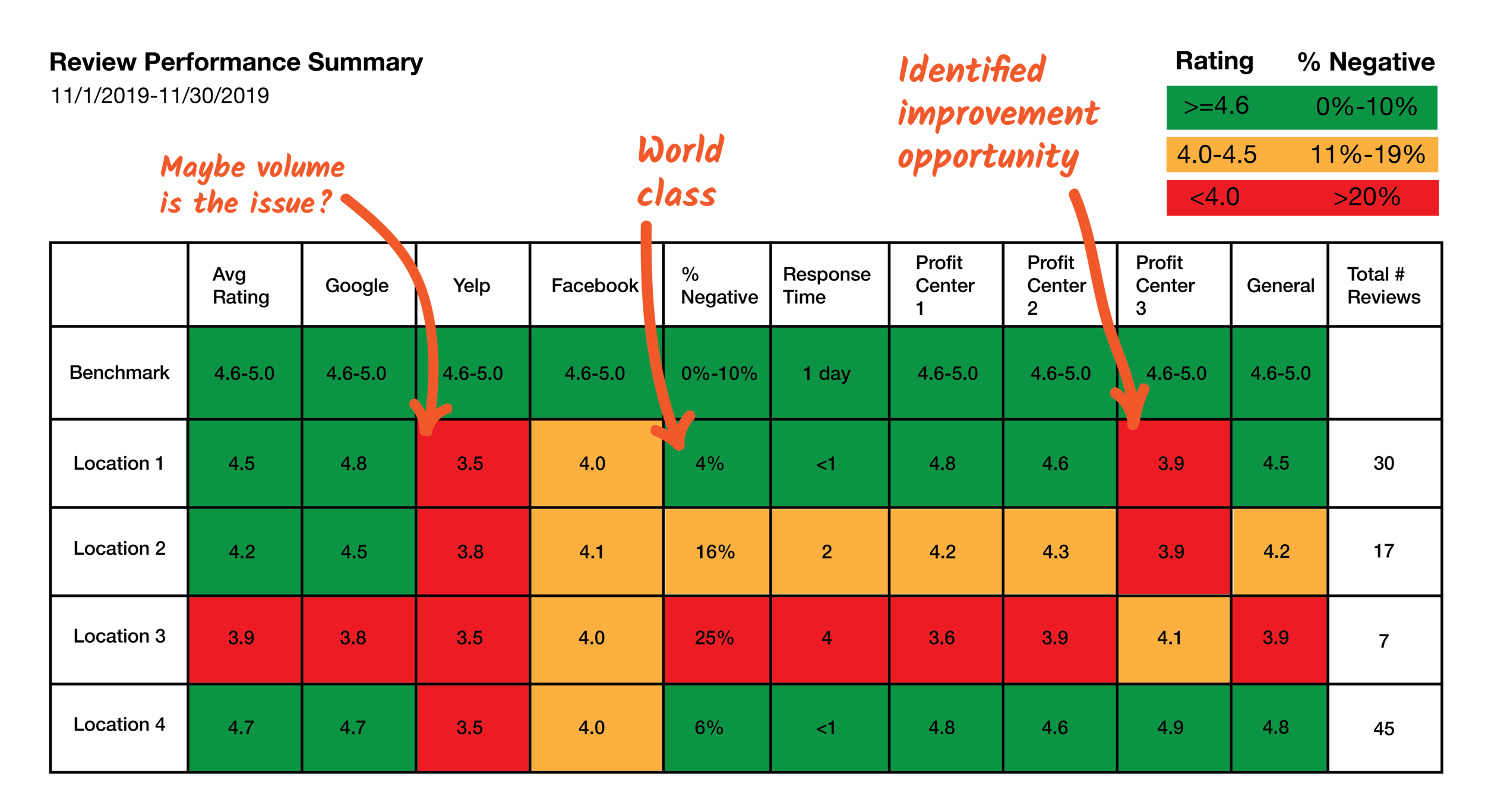
Reporting comes included in our Engage product.
Percent Negative Reviews
Out of all the online reviews your business received last month, what percentage were three stars or less? We’ve found high-performing businesses receive less than 10% negative reviews in a given timeframe. 10-20% negative is okay and over 20% means your reviews need additional attention.
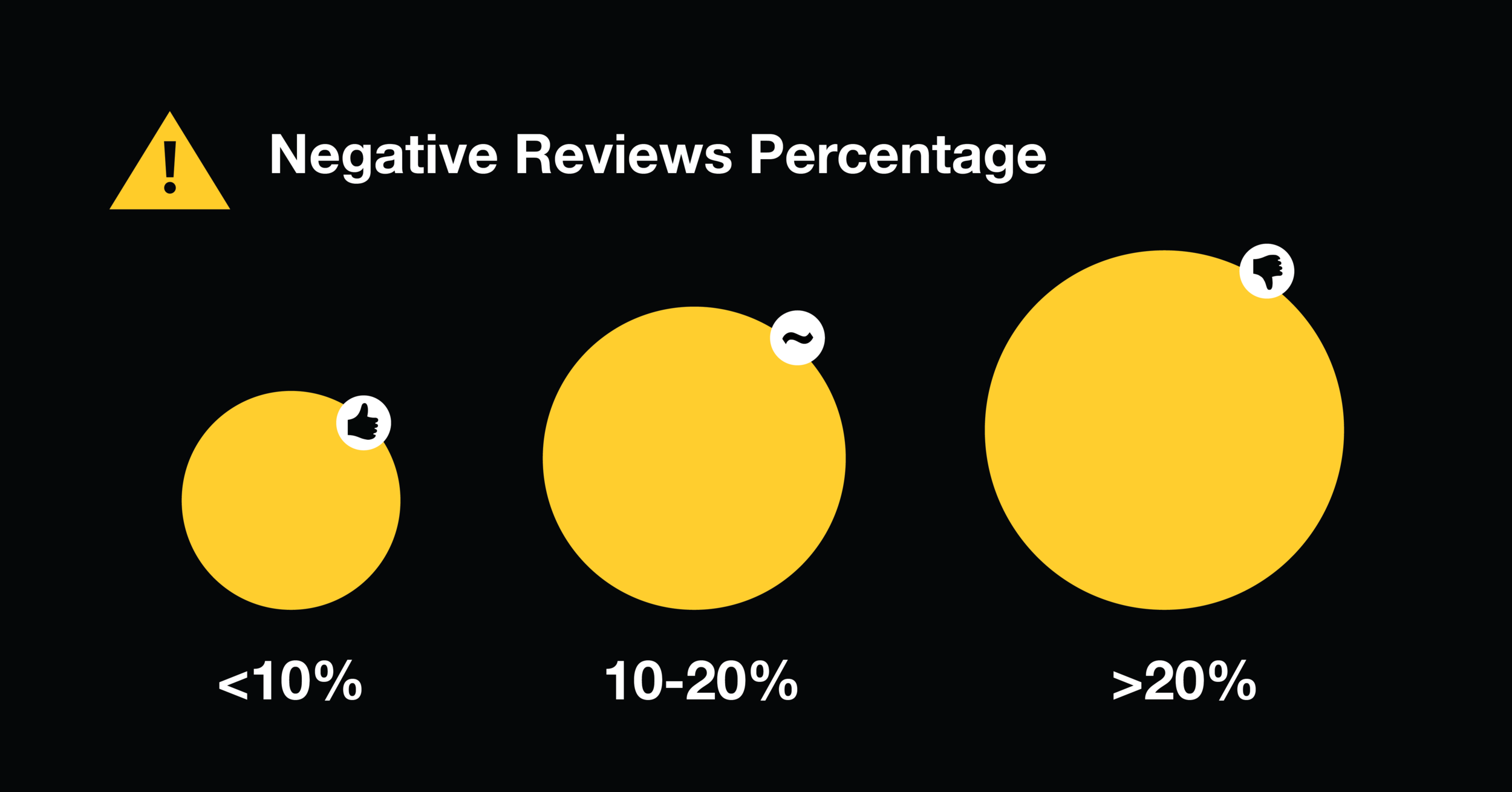
Widewail’s reporting tracks this metric for each profit center - making it easy to identify the specific areas of your business that are receiving disproportionately negative feedback. This, in turn, helps you identify problems. Was there turnover in an underperforming department that month? Maybe more of the staff are newly hired. Whatever it may be, understanding which segments of your business are struggling is the first step towards making improvements.
Review Volume
Higher review frequency has a number of positive effects. It boosts SEO by ensuring a consistent flow of up-to-date content, minimizes the effect of negative reviews, and provides your prospective customers with the ten recent reviews they need to see in order to trust your business.
Each business is different, so growing your review volume 10-25%, in the beginning, is crucial. As noted above, ~30 reviews per month on average for medium-volume businesses.
Review Diversity

Moz makes note that review diversity is an important indicator for local ranking. This is simply review volume across multiple high-value review sites within your industry.
Therefore, this becomes a subset of your review volume metric. To start, make sure your business has accounts and an active presence on the leading review sites, starting with Google, Facebook, and Yelp. If your business has a strong presence with Google, Facebook, and Yelp local SEO best practices, you’re off to a good start.
Then, research and identify review sites specific to your type of business. Sites like DealerRater for automotive, Angie’s List for home services, and TripAdvisor for travel are examples of industry-specific sites that will help your business achieve review diversity and affect local SEO in a positive way.
Time to response
When dealing with unhappy customers, the amount of time between receipt of a review and the posting of a response has a key effect.
Put yourself in the frustrated customer’s shoes. When the individual wrote the response, they were unhappy but willing to interact with your business. A week later? They may no longer be willing to engage. In that week between the review and your response, how many people have they talked to about that negative experience?
The best-case scenario would be to respond to the review the same day it’s posted, but under two days is still good. Wait three or more days and you’re letting an opportunity to resolve an issue and earn back business slip away while doing little to prevent negative word-of-mouth.
The short answer, yes.
However, in moderation, negative reviews are considered helpful.
Local SEO Guide points out that a few negative reviews increase your credibility.
A variety of opinions will help your business present genuine.
A business with only positive reviews is likely to appear suspicious to prospective shoppers. More specifically, prospective shoppers are concerned about the practice of “review gating” - the practice of discouraging or prohibiting negative reviews and selectively soliciting reviews from happy customers. Review gating violates Google’s Contributed Content Policy.
Furthermore, according to Google’s Search Quality Evaluator Guidelines, negative reviews are completely normal and expected.
“When interpreting customer reviews, try to find as many as possible. Any store or website can get a few negative reviews. This is completely normal and expected. Large stores and companies have thousands of reviews and most receive some negative ones.”
Of course, a high volume of negative online reviews will pull down your star rating and hurt your local search ranking.
If you are following best practices and benchmarking at under 15% negative reviews, there is little reason to worry about them affecting your online reputation.



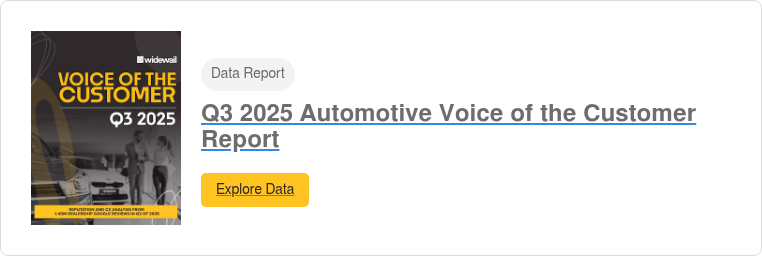


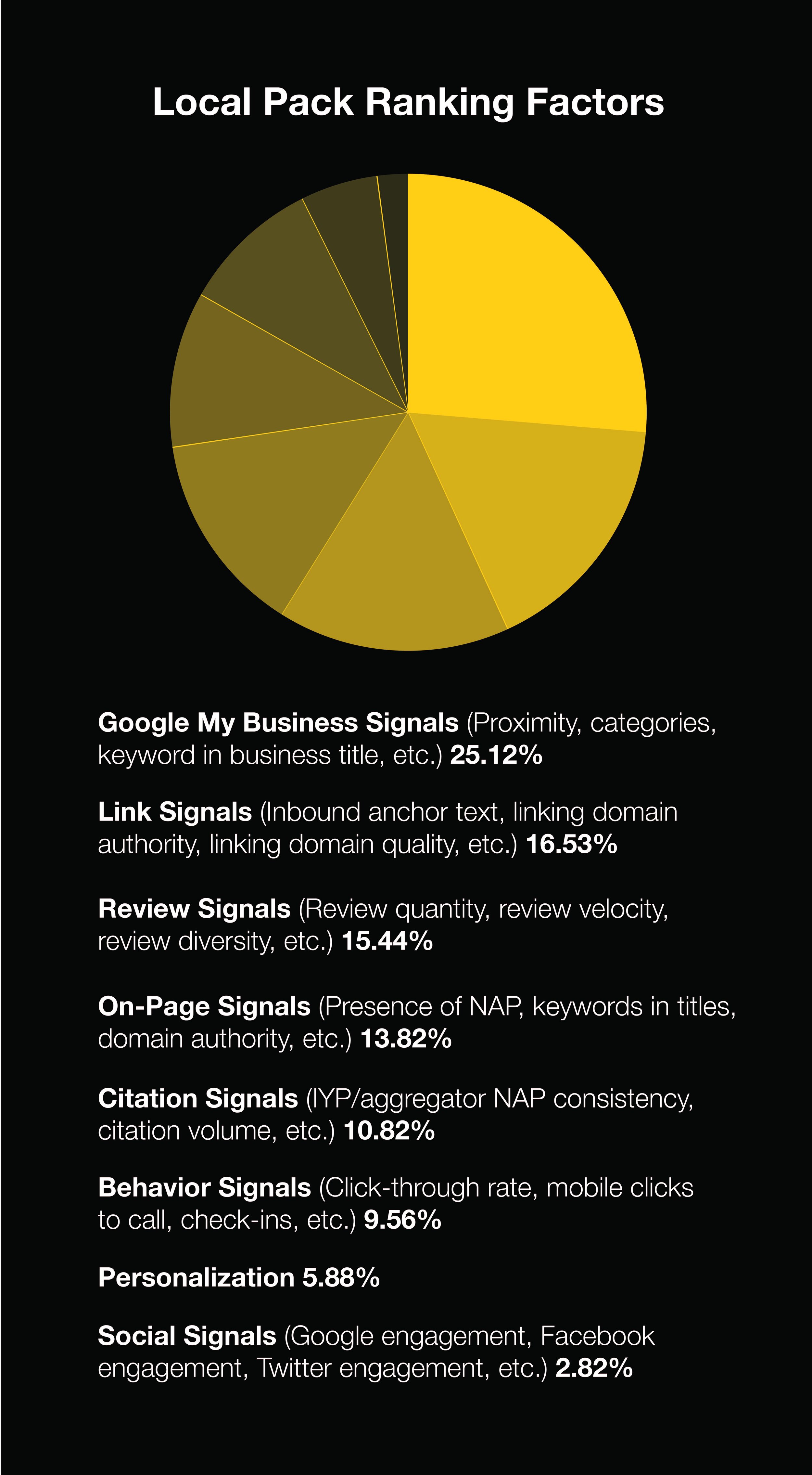 Source:
Source: Source:
Source: